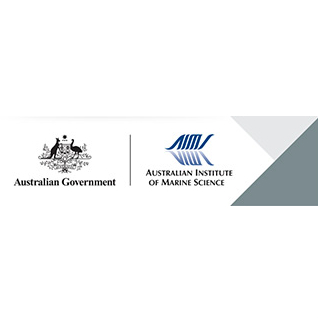Full description
The three sites chosen to study competition between algal turfs and coral were located on the reef slope of the fringing reefs at Goold Island, and Coolgaree Bay and Cannon Bay on Great Palm Island. The sites were chosen to represent a cross-shelf gradient in exposure to runoff from the Herbert River. Goold Island, north of the Herbert River, lies directly in the path of flood plumes, which generally move northward. Palm Island, south of the Herbert River is further offshore and rarely exposed to river runoff. The two sites on Great Palm Island differed in that Coolgaree Bay is on the sheltered, inshore side of the island and Cannon Bay is more exposed to offshore waters.In October 1996, twelve 13 x 19 cm quadrats, selected to include a direct boundary between turf algae and coral (Porites lobata) were marked out at each reef. The quadrats were photographed and then four quadrats were randomly assigned to each of three treatments. In the first treatment algae was removed from the quadrat using a wire brush and paint scraper without damaging the coral tissue along the boundary. The second treatment involved scraping the top layer of the tissue and mucus of the coral, but not completely removing the living coral tissue. The third treatment was the control and no manipulation occurred. Quadrats were photographed again after 7 months.The position of the boundary between algae and coral were traced from the initial and final photograph of each quadrat onto plastic film. The tracings were overlapped and a further tracing made of areas along the boundary that had changed. The tracings were scanned and the area of algae and coral was measured using image analysis software.Quantitative water quality data was collected for this study in October 1998. Dissolved inorganic and total nitrogen and phosphorus, chlorophyll a, suspended particulate matter, turbidity and salinity were measured. A longer term data set was achieved by combining these data with similar data collected from the same sites during various surveys since 1992.This research was undertaken to determine:1. whether corals and filamentous algal turfs were directly competing for space on reefs2. whether the outcome of competition was enhanced by increased availability of nutrients and sediments due to closer proximity to terrestrial sources.
Lineage
Maintenance and Update Frequency: notPlannedNotes
CreditMcCook, Laurence J, Dr (Principal Investigator)
Modified: 22 08 2025
text: westlimit=146.17; southlimit=-18.181667; eastlimit=146.17; northlimit=-18.181667
text: westlimit=146.573333; southlimit=-18.693333; eastlimit=146.573333; northlimit=-18.693333
text: westlimit=146.585; southlimit=-18.685; eastlimit=146.585; northlimit=-18.685
Competition between corals and algae on coral reefs: a review of evidence and mechanisms: McCook LJ, Jompa J and Diaz-Pulido G (2001) Competition between corals and algae on coral reefs: a review of evidence and mechanisms. Coral Reefs 19: 400-417.
local : articleId=5843
Competition between coral and algal turfs along a gradient of terrestrial runoff in the nearshore central Great Barrier Reef: McCook LJ (2001) Competition between coral and algal turfs along a gradient of terrestrial runoff in the nearshore central Great Barrier Reef. Coral Reefs 19: 419-425.
local : articleId=5730
- global : 65996fd2-d738-4113-831f-e5de55f968cc


